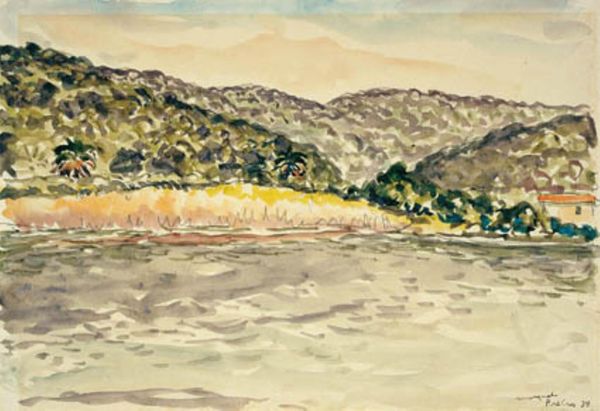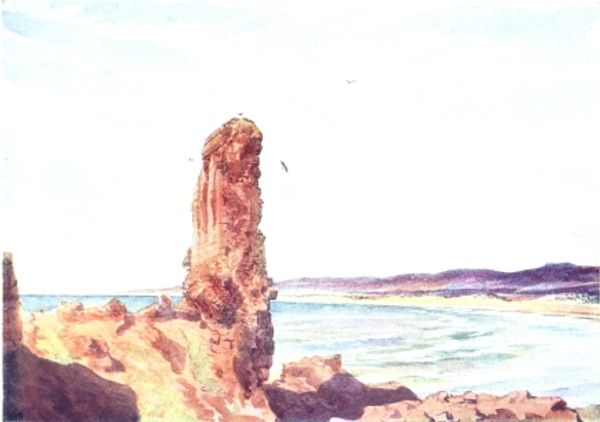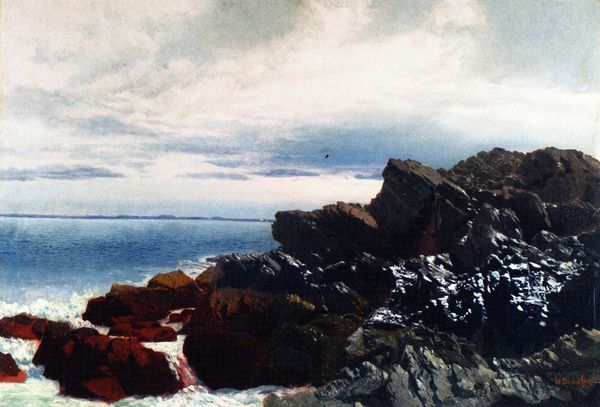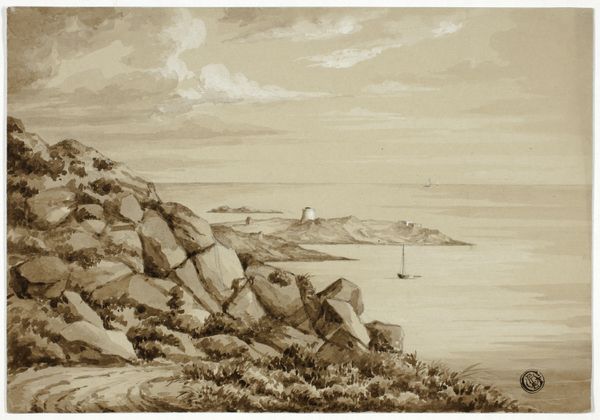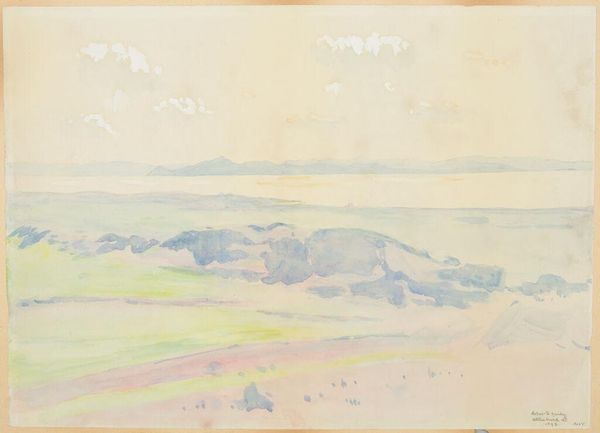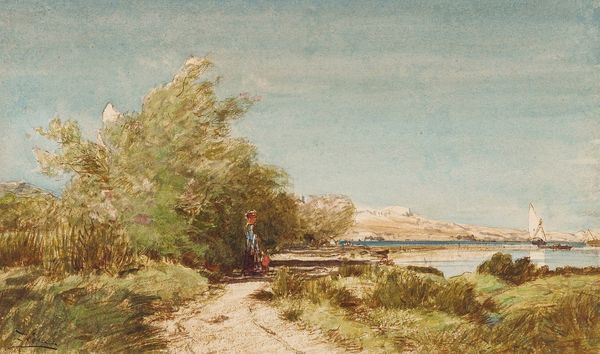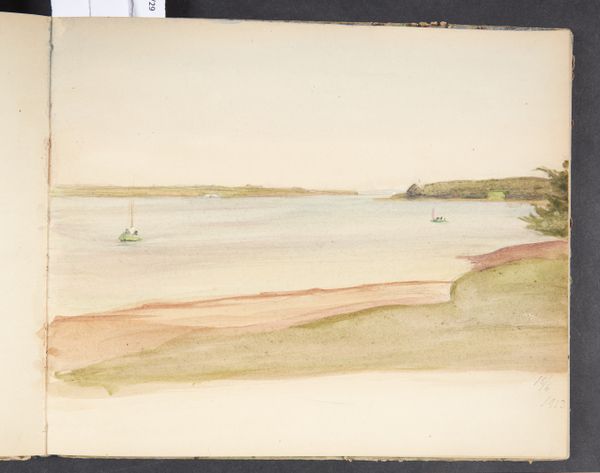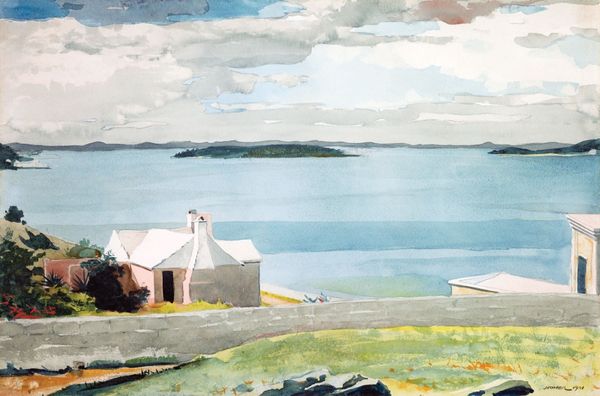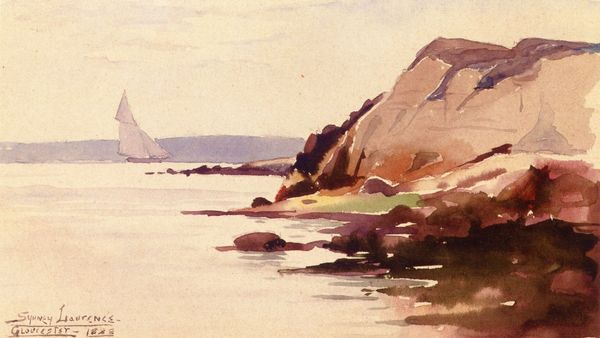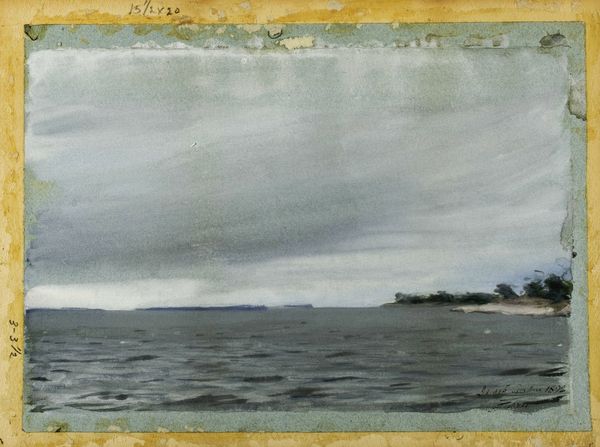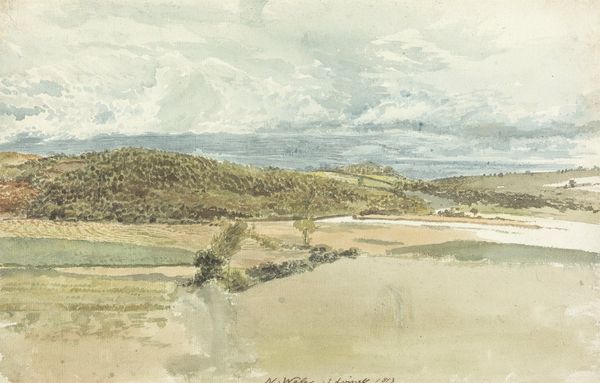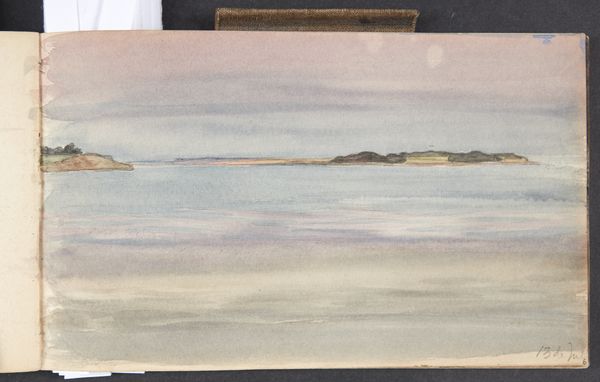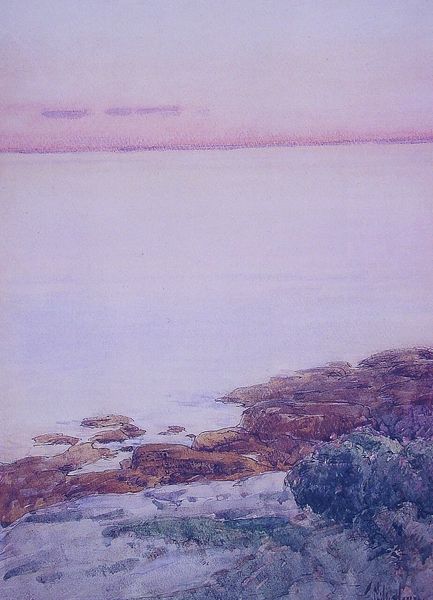
Galilee, looking from near the mouth of the Jordan towards the Mount of Beatitudes and Tabor
0:00
0:00
painting, plein-air, watercolor
#
painting
#
plein-air
#
landscape
#
watercolor
#
romanticism
#
seascape
#
watercolor
Copyright: Public domain
Editor: This watercolor piece is titled "Galilee, looking from near the mouth of the Jordan towards the Mount of Beatitudes and Tabor" by Elizabeth Thompson. The light in this artwork really stands out. What do you see in this piece, considering its historical and cultural context? Curator: It’s interesting to view this watercolor as a cultural document, particularly considering Thompson's position as a woman artist often painting military scenes. How might this more pastoral scene intersect or diverge from societal expectations placed on women artists of the time? Think about how landscape paintings of this period frequently served to validate ownership and power. This image of Galilee could participate in similar discourses tied to colonial or religious ambition, using beauty to normalize a particular political agenda in that geographical region. Editor: That's fascinating, I hadn't considered it in light of Thompson's other works. Does the choice of watercolor as a medium add another layer? Curator: Absolutely. Watercolor, often associated with plein-air painting and thus immediate and direct representation, was increasingly used for scientific and survey purposes during this time. The ‘accuracy’ implied by the medium can also lend a certain ‘truthfulness’ to the depicted space. So, how might this blend of artistic vision and scientific observation function to establish, or perhaps even question, claims to that space? Editor: That's given me so much to think about regarding landscape painting as more than just pretty scenery. I now see it as a potential expression of power and influence. Curator: Precisely. And it underscores how artistic choices, especially regarding seemingly "neutral" genres like landscapes, frequently intertwine with broader socio-political narratives. Analyzing it from this perspective makes us question the relationship between the artist, their art, and its cultural impact.
Comments
No comments
Be the first to comment and join the conversation on the ultimate creative platform.
